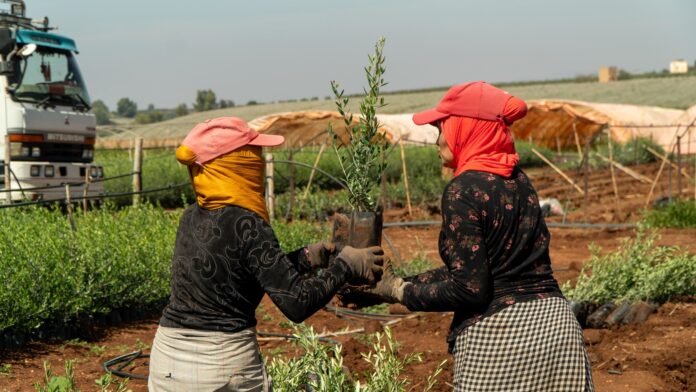
As the world grapples with the intensifying impacts of climate change, companies are urgently seeking effective ways to curb their carbon footprints.
While innovation often focuses on futuristic technologies, experts at the Center for International Forestry Research and World Agroforestry (CIFOR-ICRAF) argue that the most powerful climate solution is already here—and has been for millions of years: trees.
Trees are nature’s unmatched carbon capture and storage technology. Through photosynthesis, they absorb carbon dioxide (CO₂) from the atmosphere and lock it away in their trunks, roots, and soil for decades or even centuries.
Protecting and restoring forests could provide nearly one-third of the emissions reductions needed by 2030 to meet global climate goals. Yet tapping into this potential requires more than planting saplings—it demands responsible, science-backed engagement with carbon markets.
A new guide by CIFOR-ICRAF lays out a blueprint for how companies can invest in carbon projects the right way—ensuring they not only offset emissions but also empower communities, safeguard biodiversity, and enhance climate resilience.
The Promise—and Pitfalls—of Carbon Markets
Carbon markets allow businesses to invest in activities that remove or avoid emissions, such as reforestation or forest conservation, and in return, receive carbon credits. These credits can then be used to balance out emissions they cannot eliminate internally. However, the market has faced criticism over concerns about “greenwashing,” inflated claims, and projects that displace local communities or fail to deliver long-term benefits.
“The carbon market can be a force for good—but only if done right,” says a CIFOR-ICRAF expert. “We must focus on real, durable carbon removal and ensure that projects contribute meaningfully to people and nature.”
Five Golden Rules for Climate-Positive Tree Projects
The guide outlines five key principles companies should follow to harness the power of trees for carbon markets responsibly:
- Make Real Climate Contributions
Projects must focus on genuine, scientifically verified carbon removal or emissions avoidance. Companies should avoid relying solely on offsets to claim “carbon neutrality” and instead integrate carbon projects into broader decarbonization strategies. - Deliver Benefits for People and Nature
Successful projects provide co-benefits such as improving local livelihoods, enhancing biodiversity, and protecting water sources. This requires meaningful engagement with Indigenous Peoples and local communities, whose traditional knowledge and stewardship are often key to success. - Secure Community Rights
Respect for land tenure and resource rights is critical. Projects must involve communities from the start, ensuring they have a real stake in decision-making, benefit-sharing, and long-term stewardship. Without community buy-in, carbon projects risk failure and injustice. - Guarantee Transparency and Credibility
Companies should only invest in projects that use credible, independent standards for measuring, reporting, and verifying carbon benefits. Regular third-party audits and open disclosure of project information build trust and accountability. - Prioritize High-Integrity Credits
Not all carbon credits are created equal. High-integrity credits reflect true additionality—meaning the carbon savings or removals would not have happened without the project—and include safeguards against over-crediting, double counting, and reversals.
Beyond Planting Trees: The Importance of Forest Stewardship
Tree-planting has become a popular corporate climate gesture. However, experts warn that planting alone is not enough—and sometimes, poorly planned efforts can even do harm. Species selection, planting techniques, and ongoing care matter tremendously. Furthermore, protecting standing forests and restoring degraded ecosystems often deliver greater carbon benefits than new plantations.
“Forests are living systems, not carbon factories,” notes the CIFOR-ICRAF guide. “Successful carbon projects recognize the complexity of ecosystems and prioritize the health of entire landscapes.”
Long-Term Vision Required
Carbon sequestration through trees is a long-term process. Projects must plan for permanence—ensuring that forests are protected for decades to come. Mechanisms such as insurance buffers, financial reserves, and ongoing community involvement are vital to mitigate risks like fire, disease, or land-use change.
Investing in nature-based solutions is not a quick fix, but a profound commitment to future generations.
Case Studies Highlight Success and Cautionary Tales
The guide draws on lessons from real-world projects around the globe. In some cases, forest carbon initiatives have boosted incomes for Indigenous communities, revitalized wildlife habitats, and helped companies meet sustainability goals. In others, failures to respect rights or ensure credibility have led to project collapse and reputational damage.
For instance, successful initiatives typically start with extensive community consultations, build local governance structures, and invest in long-term monitoring. On the flip side, projects that prioritize short-term carbon claims over community needs often unravel.
Private Sector’s Expanding Role
With voluntary carbon markets poised to grow to $50 billion annually by 2030, private sector engagement is essential. Forward-thinking companies can be leaders in promoting high-integrity nature-based solutions—moving beyond offsetting toward genuine climate and social contributions.
“This is a pivotal moment,” says CIFOR-ICRAF. “By investing wisely in trees and landscapes, companies can help bend the curve on climate change while advancing justice and sustainability.”
Trees as Allies, Not Commodities
Harnessing the world’s best green technology—trees—requires humility, responsibility, and respect. Carbon markets can be a powerful tool for positive change, but only when rooted in science, rights, and long-term stewardship.
Rather than treating trees as mere carbon accounting tools, the CIFOR-ICRAF guide calls for seeing forests as vital, living allies in humanity’s greatest challenge: securing a livable planet for all.








